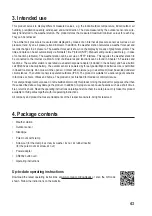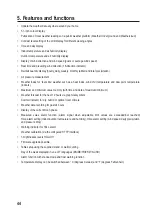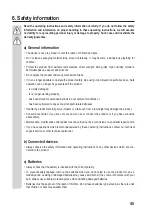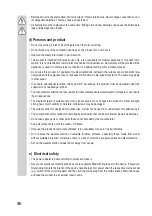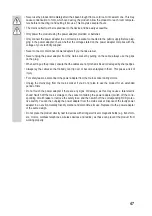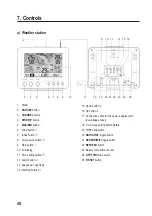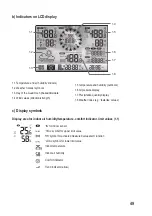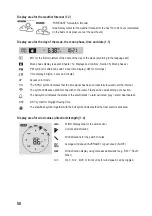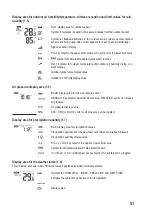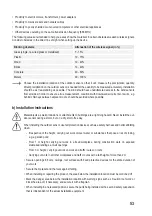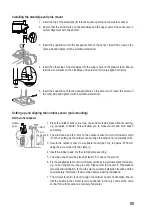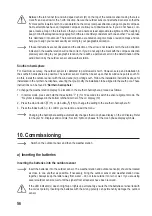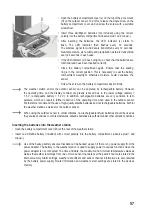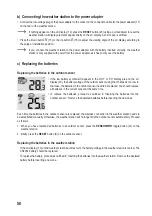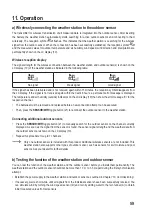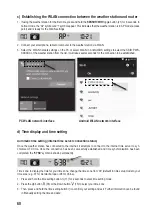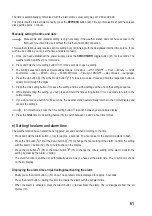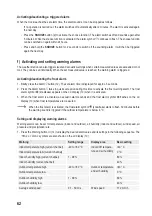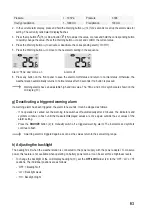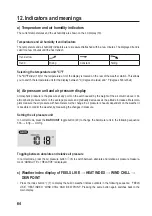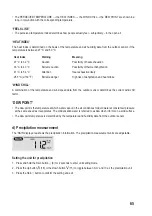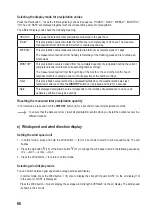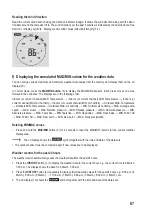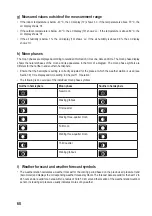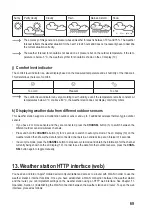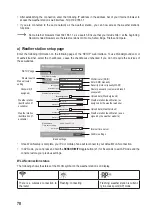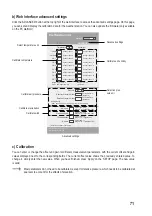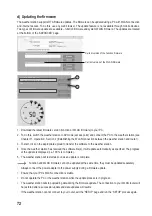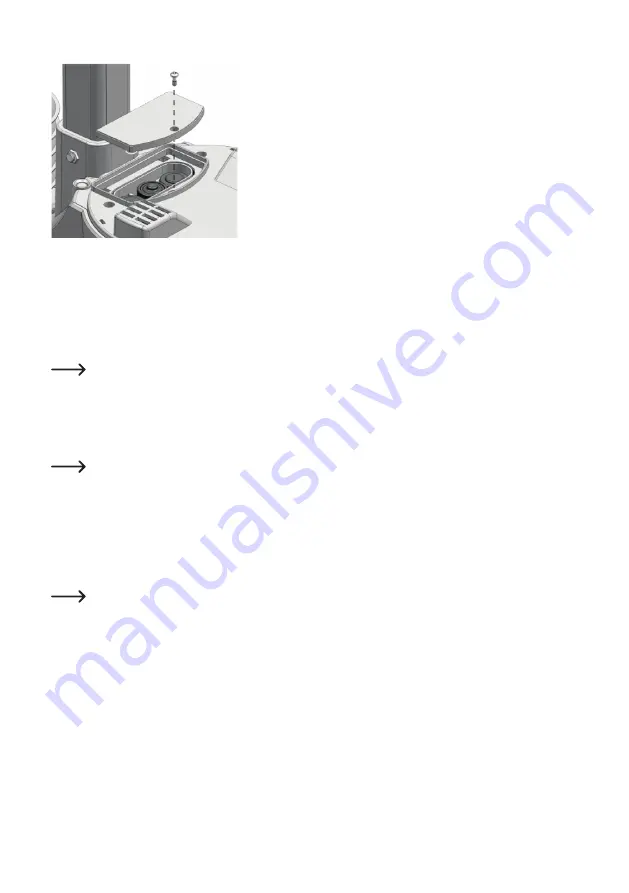
57
•
Open the battery compartment cover (L) on the top of the pole mount
(H) on the outdoor sensor. To do this, release the single screw on the
battery compartment cover and unscrew the screw with a suitable
screwdriver.
• Insert three AA/Mignon batteries (not included) using the correct
polarity into the battery compartment (observe plus/+ and minus/-).
• After inserting the batteries, the LED indicator (J) starts to
flash. The LED indicator then flashes every 12 seconds.
The wireless signal for wind data is transmitted every 12 seconds.
New temperature, air humidity and precipitation data are transmitted
every 24 seconds in each case.
• If the LED indicator (J) does not light up, check that the batteries are
functional and have been inserted correctly.
• Close the battery compartment again. Ensure that the sealing
ring is in the correct position. This is necessary to seal the battery
compartment watertight, otherwise moisture could penetrate the
sensor.
•
Screw the screw on the battery compartment back in firmly.
The weather station and/or the outdoor sensor can be operated by rechargeable battery. However,
the operating time and the display contrast are greatly reduced due to the lower voltage (battery =
1.5 V, rechargeable battery = 1.2 V). In addition, rechargeable batteries are very sensitive to tem-
perature, which can result in further reduction of the operating time when used in the outdoor sensor.
We therefore recommend the use of high-quality alkaline batteries and not rechargeable batteries, both for
the weather station as well as for the outdoor sensor.
When using the outdoor sensor in colder climates, non-rechargeable lithium batteries should be used as
they are less sensitive to cold temperatures. Alkaline batteries are sufficient under other climatic conditions.
2
Inserting the batteries into the weather station
•
Open the battery compartment cover (23) at the rear of the weather station.
• Insert one CR2032 battery (included) with correct polarity into the battery compartment (observe plus/+ and
minus/-).
Use of the backup battery ensures that data can be backed up even if there is no power supply from the
power adapter. The battery in the weather station is used to supply power to various functions when the
power adapter is not connected. The time and date, the maximum and minimum temperature values as
well as the weather recordings from one or more sensor channels over the past 24 hours are stored in the
internal memory. Alarm settings, weather data offsets and sensor channel information are also retained
by the battery power supply. Router information and weather server settings are stored in the device’s
memory.

